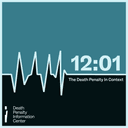
On August 31, the U.S. Court of Appeals for the Ninth Circuit heard argument in Jones v. Davis, an appeal by California of the 2014 U.S. District Court ruling that declared California’s death penalty unconstitutional. In 2014, U.S. District Court Judge Cormac Carney held that the decades-long delays caused by California’s failure to provide lawyers for nearly 350 of its death-row prisoners made its death penalty system unconstitutionally cruel and unusual. He said that the “random few” whom California eventually executes — to date, just 13 out of more than 900 individuals sentenced to death — “will have languished for so long on death row that their execution will serve no retributive or deterrent purpose and will be arbitrary.” Lawyer Michael Laurence (pictured, left), representing death row inmate Ernest Dewayne Jones, called the state’s death penalty system “dysfunctional.” He argued that California’s death penalty produces the same type of arbitrary outcomes that led the Supreme Court to invalidate death penalty statutes nationwide in 1972 in the landmark case of Furman v. Georgia. Lawyers from the California Attorney General’s Office argued that the delays in this case are different from the issues presented to the Court in Furman and that the lengthy appeals process is evidence of careful efforts to protect the constitutional rights of people who have been sentenced to death. The Ninth Circuit must decide whether to address the substance of Jones’ claim or sidestep the issue on procedural grounds. If it upholds Judge Carney’s ruling, the sentences of more than 700 people on California’s death row could be overturned and replaced with sentences of life without parole.
(E. Eckholm, “California Defends Its Review Process in Appeal to Preserve Death Penalty,” The New York Times, August 31, 2015; B. Egelko, “Federal judges hint they’ll bow out of challenge to death penalty,” San Francisco Chronicle, August 31, 2015. Image from live feed of 9th Circuit argument.) See Arbitrariness and States with Executions on Hold.



